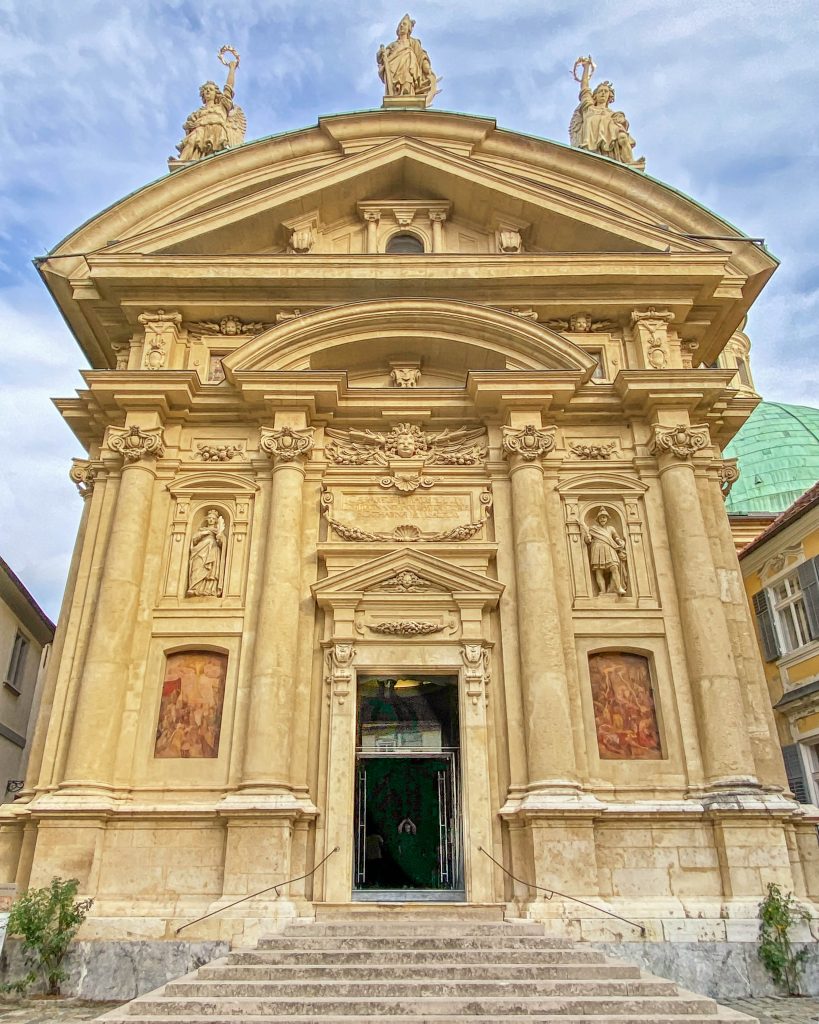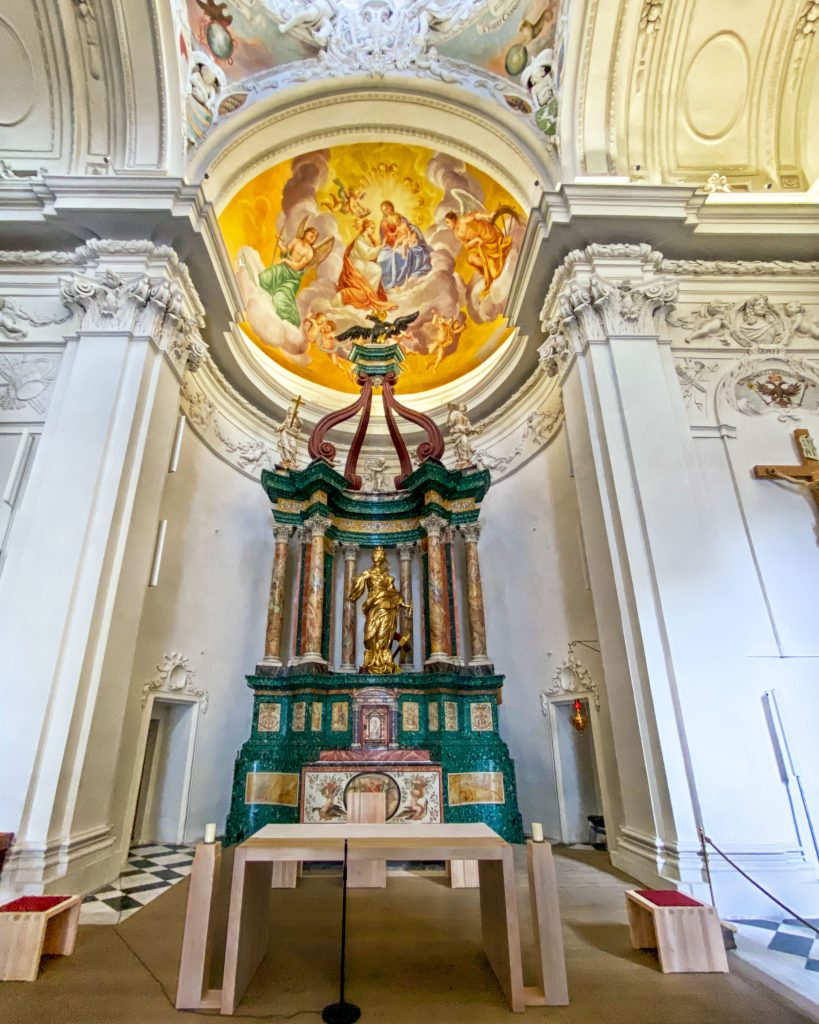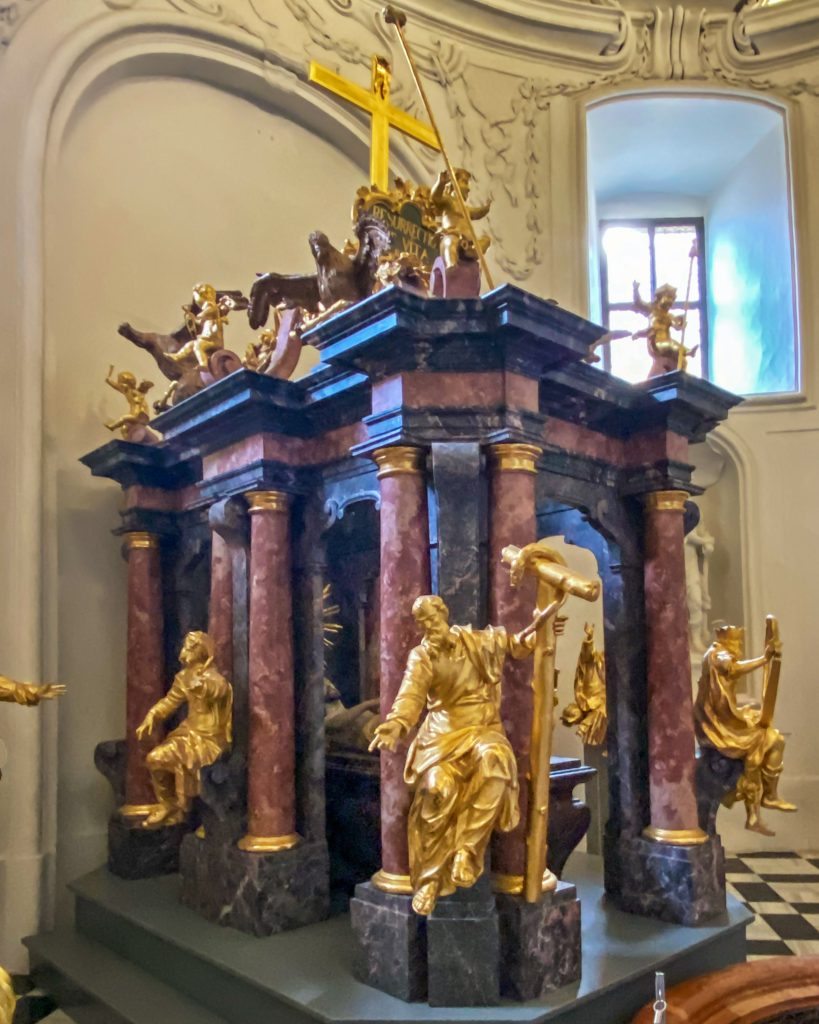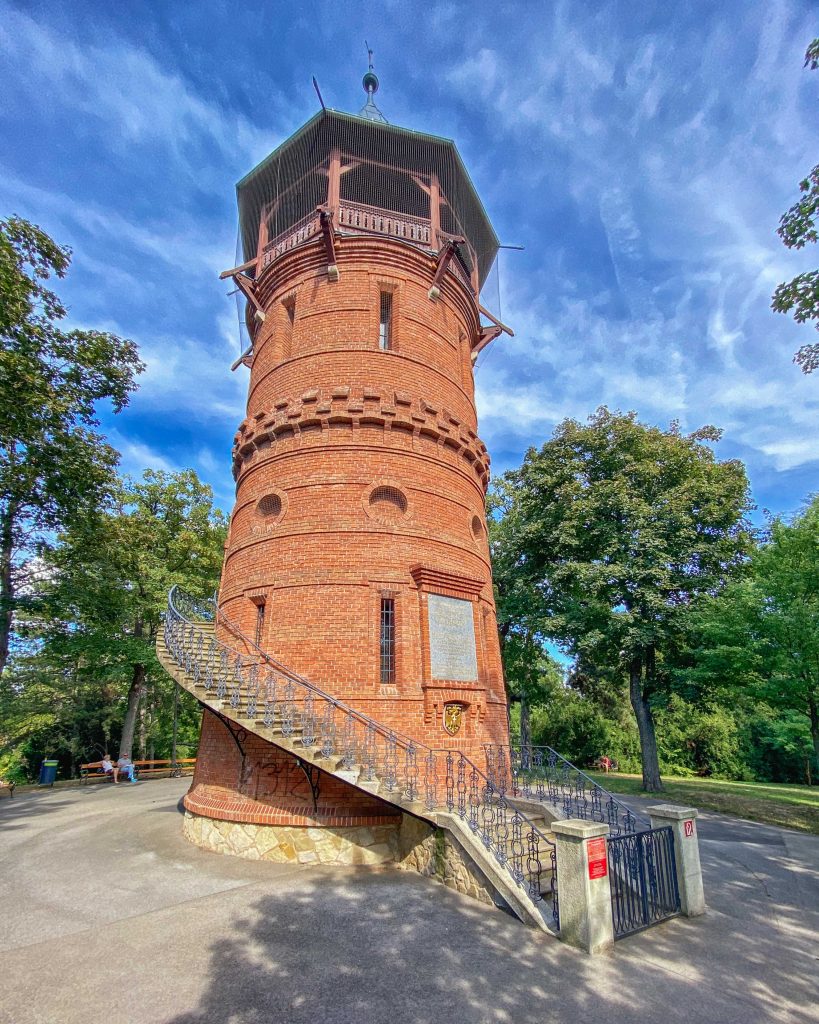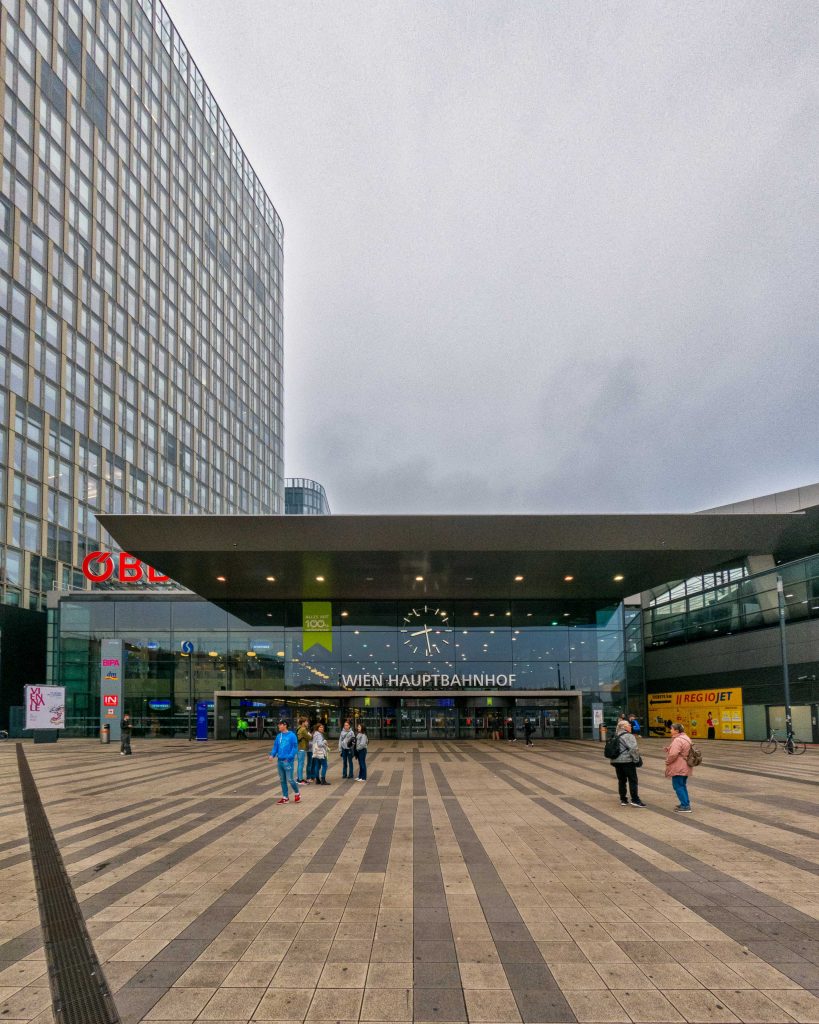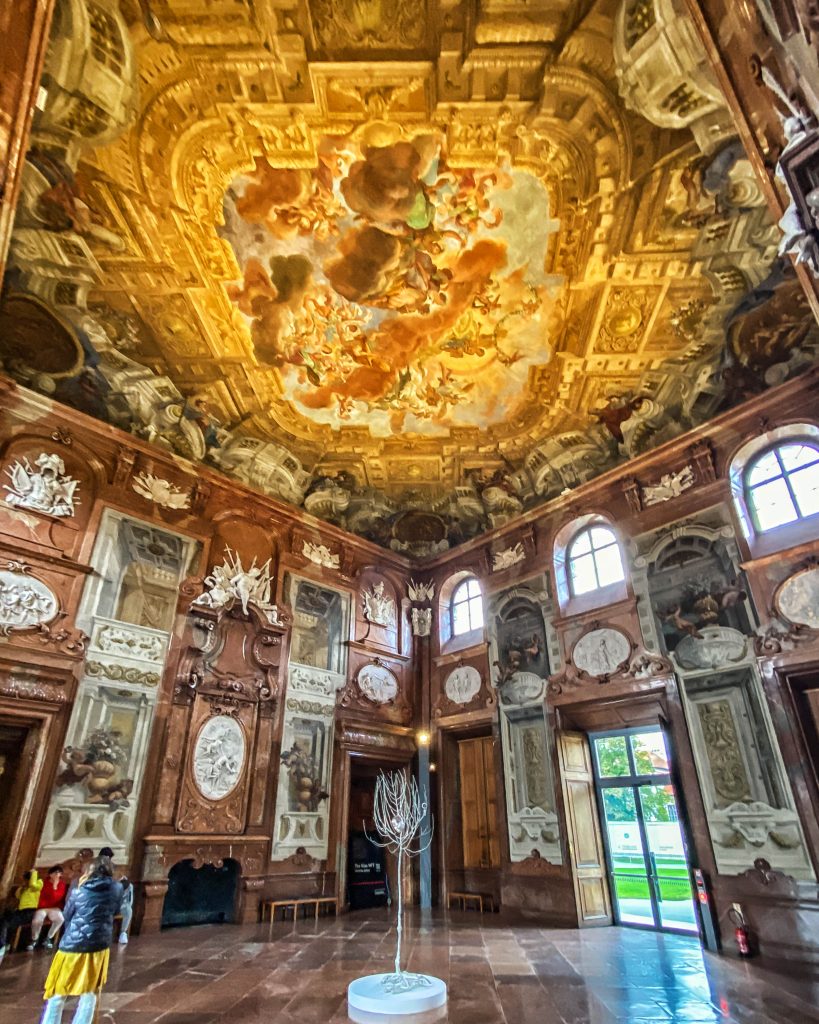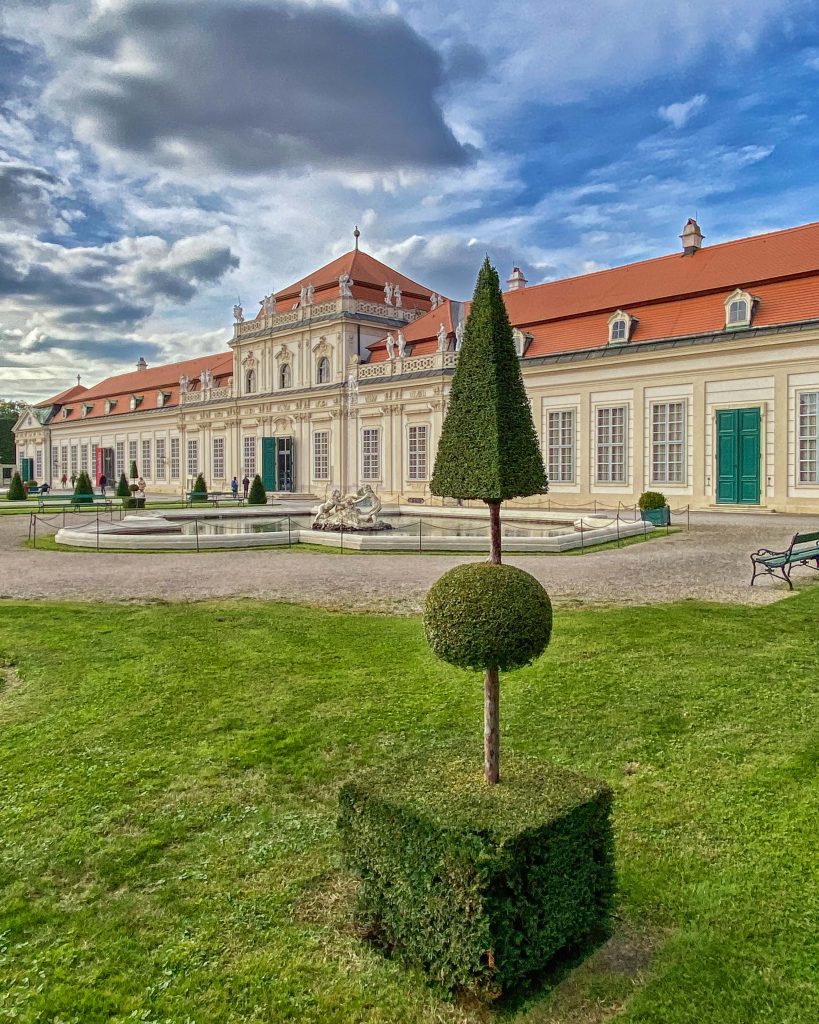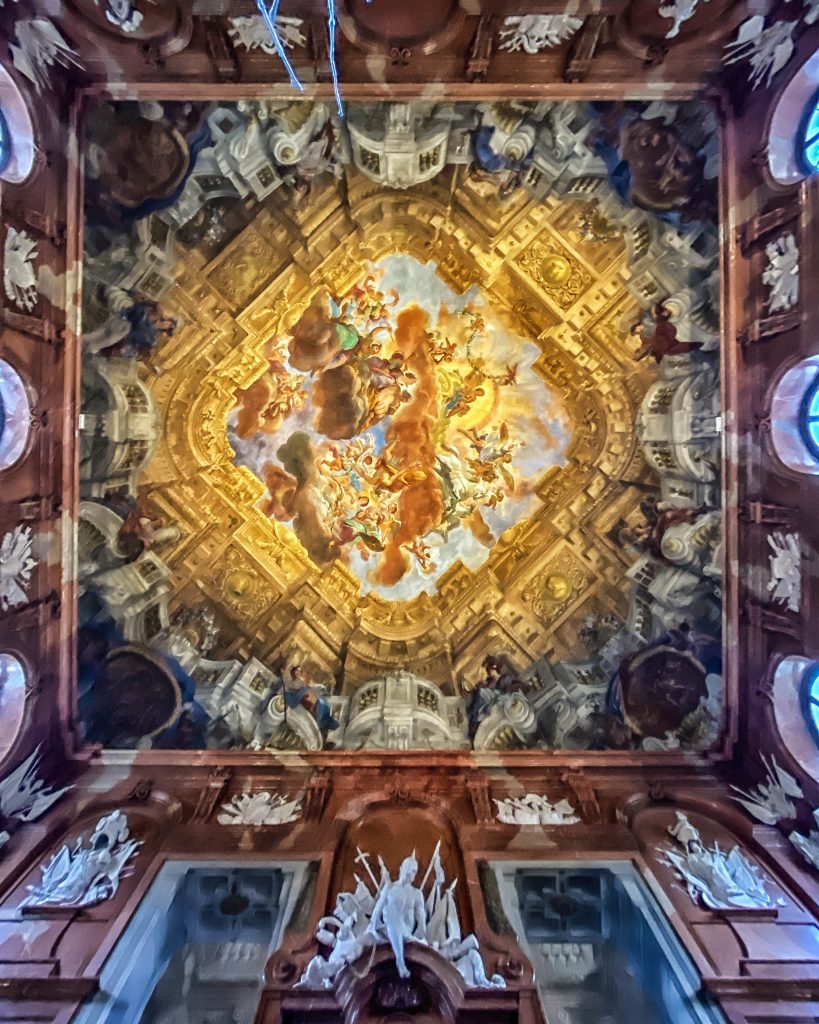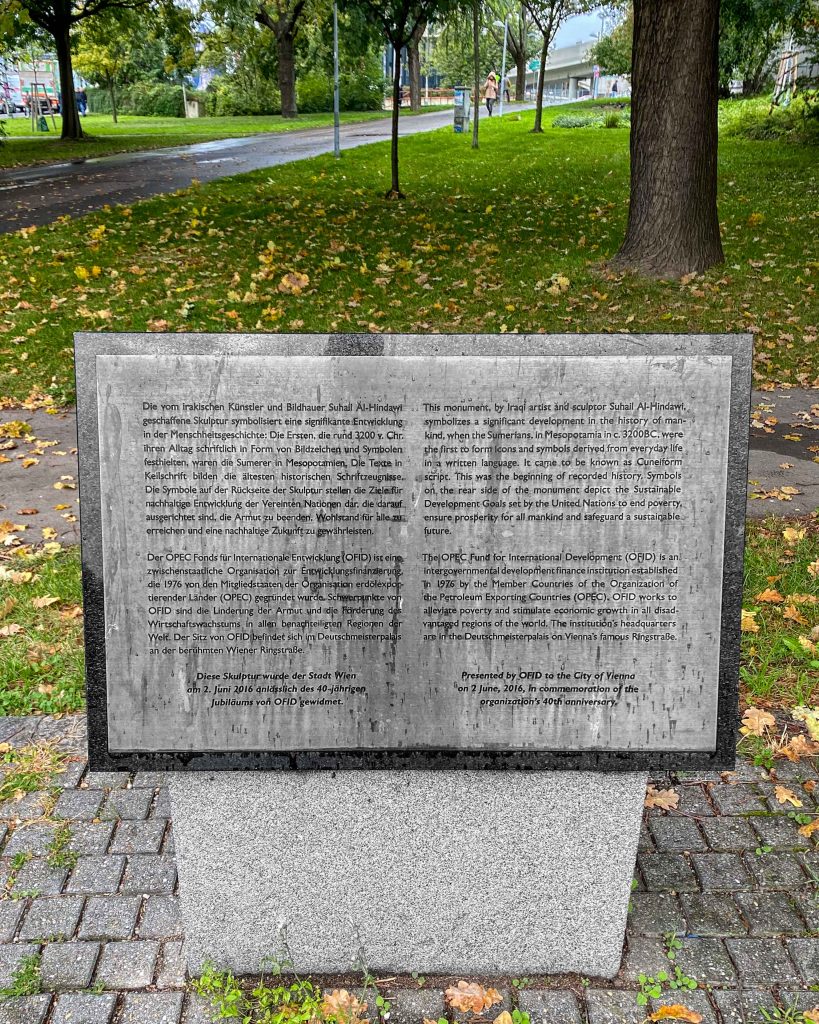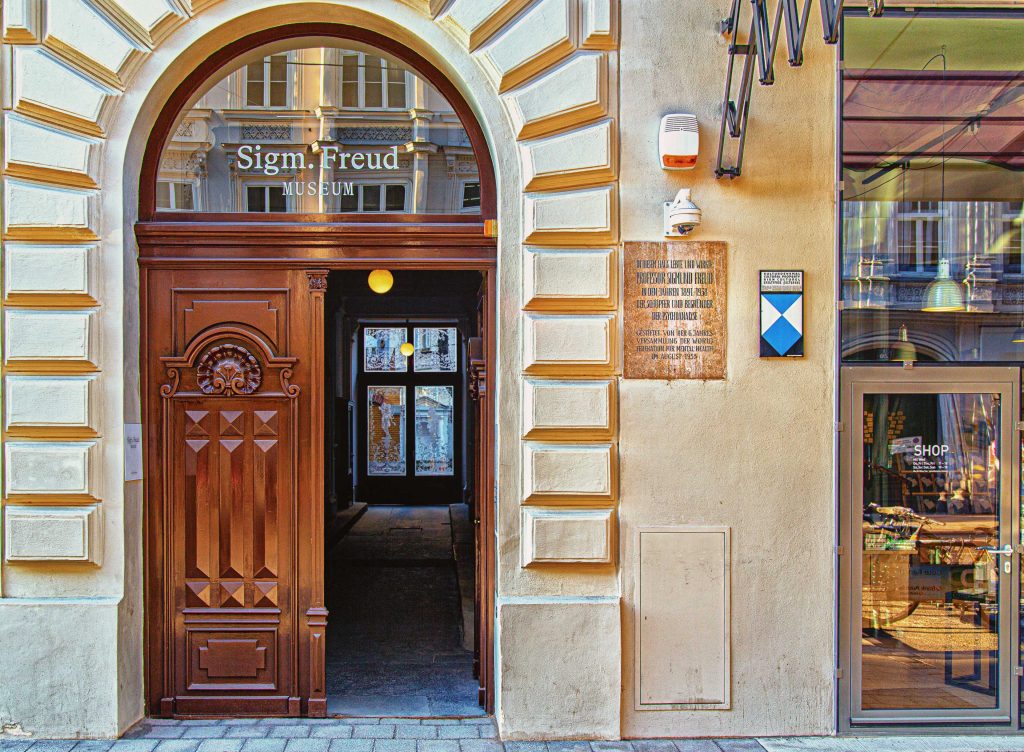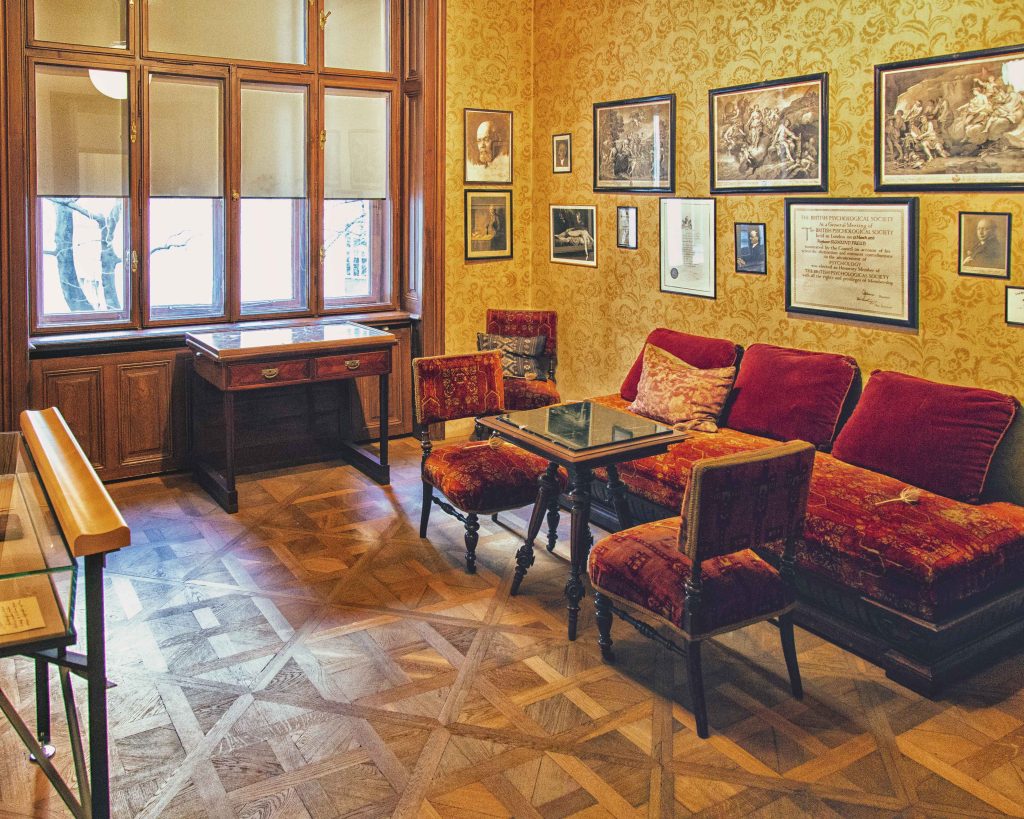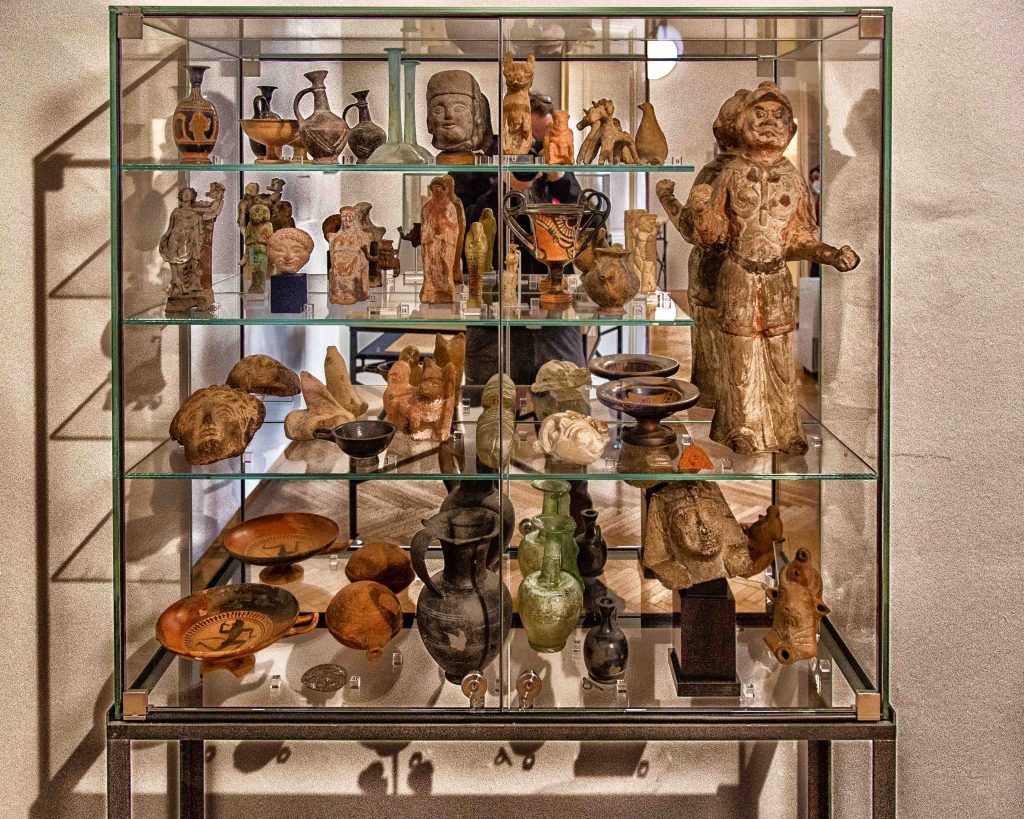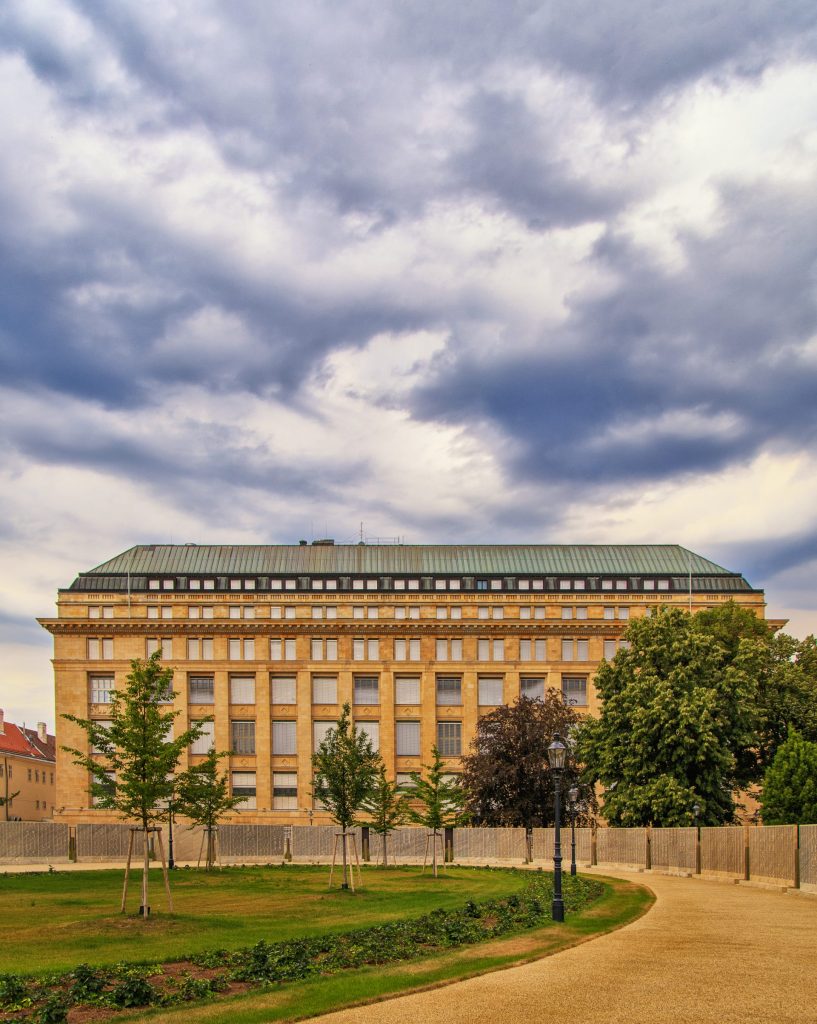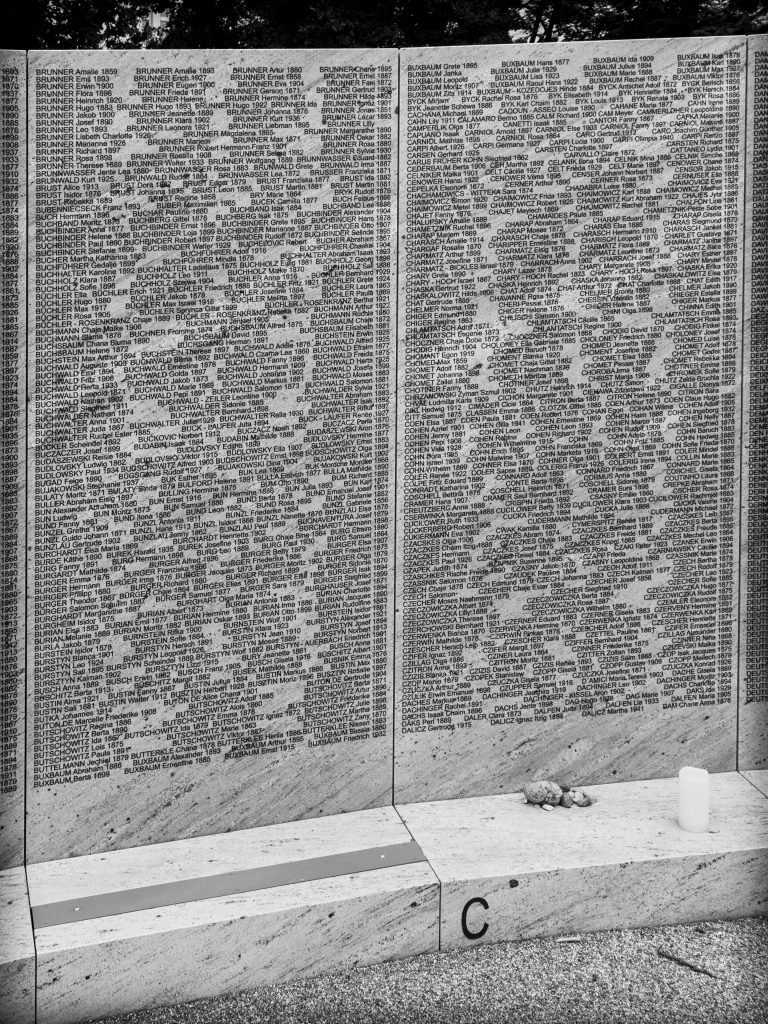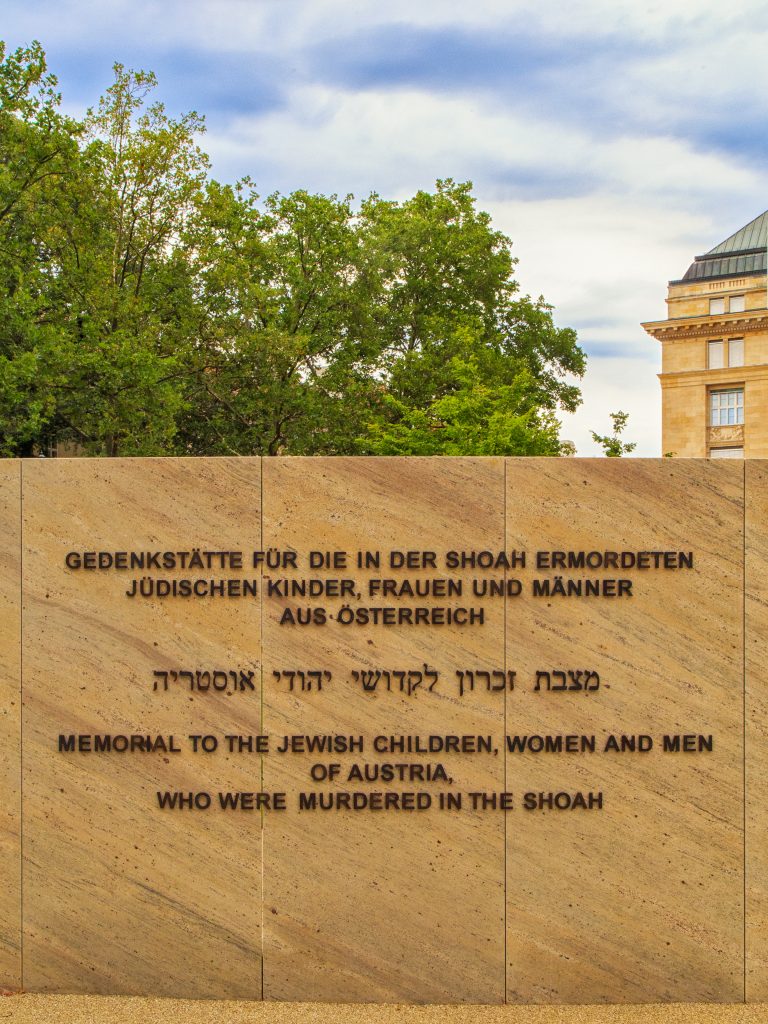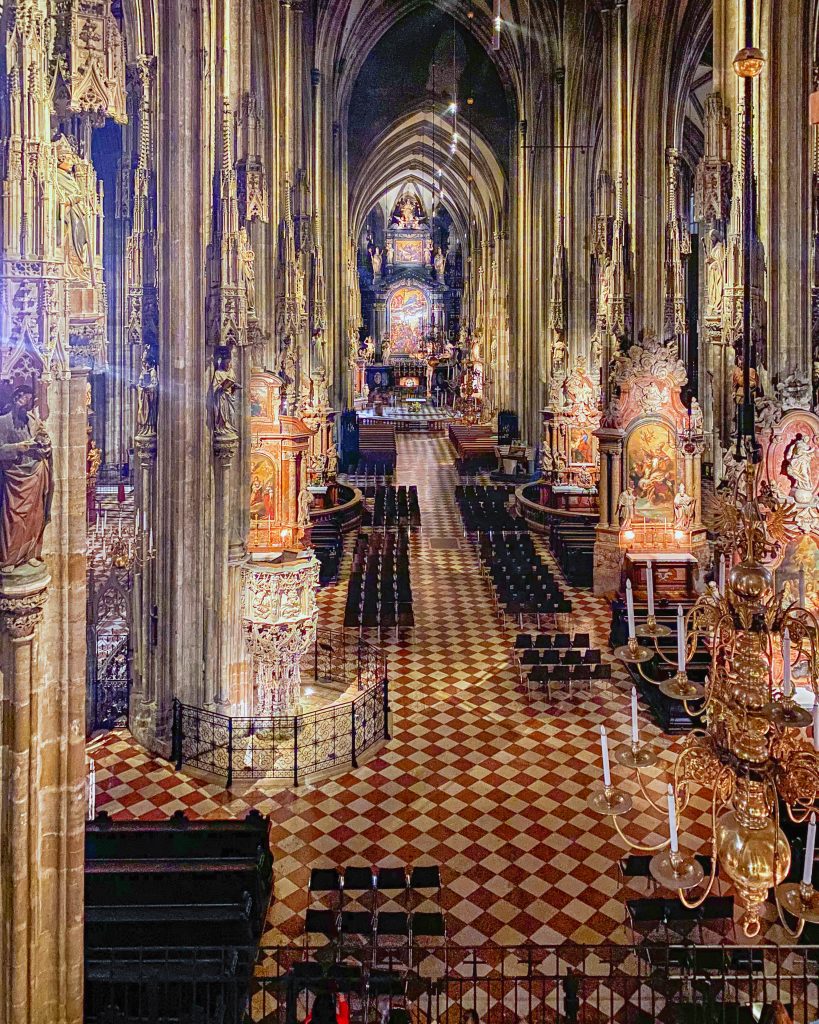Roof St. Stephans Cathedral
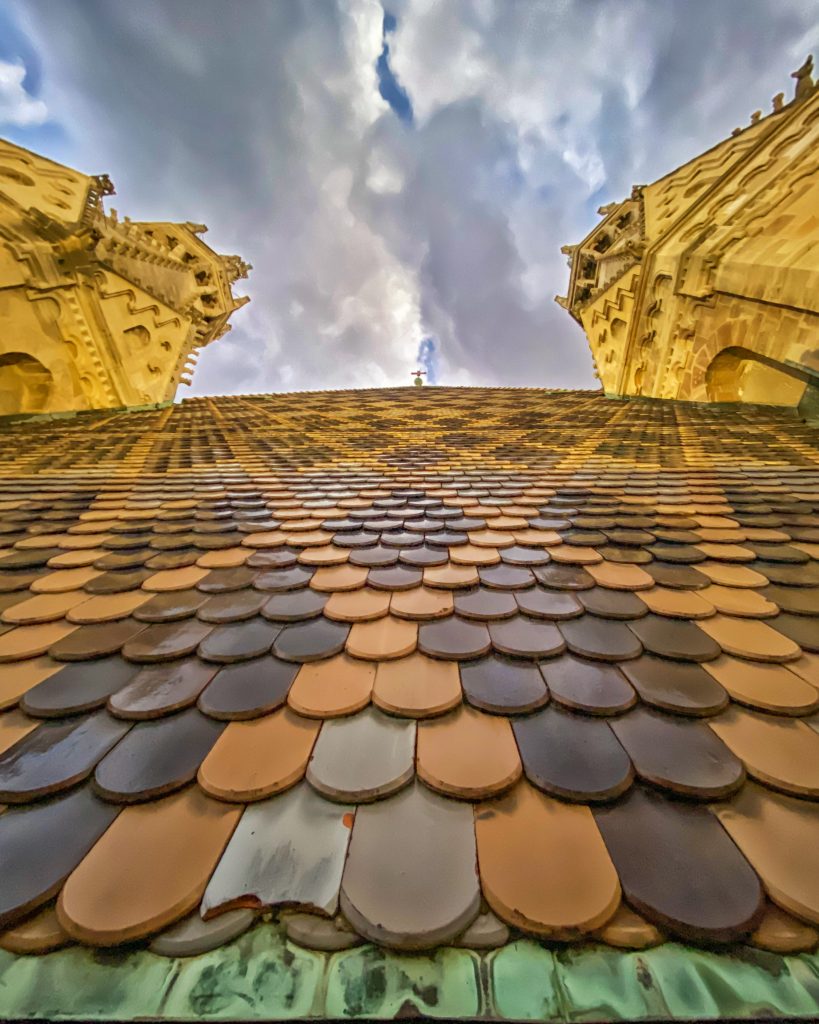
The roof of St. Stephen’s Cathedral is characterized by glazed roof tiles – so-called plain tiles – manufactured in Poštorná near Břeclav in the Czech Republic. The 230.000 tiles with a laid length of 51 km cover 10,000 m2 of roof in 10 colors and are fastened with two copper nails each.
The roof structure with a 600 ton steel framework is 110m long, has 35m span and is 38m high. The 60°-80° inclination ensures effective self-cleaning, even though additional manual cleaning is always required, e.g. to remove plant seeds from between the tiles.
The oriental pattern in zigzag was fashionable in the Gothic period, the Saracen carpet in which the most important donor of the cathedral, Rudolf IV, was buried had a similar pattern.
